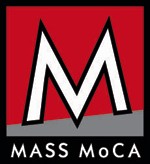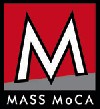Invisible Cities at Mass Moca
Exhibition opening April 15 Includes Four New Commissions
By: MoCA - Mar 16, 2012
(North Adams, MA) For centuries in literature and art the urban landscape has been both muse and protagonist. Invisible Cities, opening on April 15 at MASS MoCA, features the work of ten international artists who interpret and re-imagine metropolises both familiar and fantastic. The exhibition's title is a nod to Italo Calvino's beloved book which recounts Marco Polo's descriptions of the cities of the great Kublai Khan's fading empire. Like Polo's vivid imagery, which leaves the reader wondering if the cities he describes are real or perhaps all just re-imagined versions of his home city of Venice, the varied works in the show explore how perceptions of place are shaped by personal influences -- memory, desire, and loss -- as well as by cultural forces, including history and the media.
Under the weight of time and the influence of globalism, the world today is experiencing dramatic transformations and shifts in power similar to those seen during Khan's own dynasty. Europe and America look on as once-bustling cities like Detroit shrink and fall into decay, and world capitals like Rome shine bright in the historical imagination. At the same time cities in Asia, Africa, and the Middle East are rapidly growing. Some of the works in the exhibition address these changes and often frame the city in its relationship to the larger landscape.
Invisible Cities features works by Lee Bul, Carlos Garaicoa, Liz Glynn, Mary Lum, Emeka Ogboh, and Sopheap Pich, with new commissions by Diana Al-Hadid, Kim Faler, Francesco Simeti, and Miha Strukelj.
Considering the city both from within and without, many of the artists translate the fleeting experience of place through ephemeral materials such as light, soap, and sound. Their works conjure impressions rather than representations of cities, reminding us that any city is as much an idea or experience as an assemblage of asphalt, brick, steel, and glass.
Diana Al-Hadid's new work - one of her most ambitious to date -- expands her interest in what she has called "impossible architecture." Made from simple materials such as wood, cardboard, and plaster-reinforced fiberglass, and influenced by Northern Renaissance paintings and sculptures, the work recalls Bernini's elegant marbles with fluid shapes and reclining figures which float above the buildings below like clouds.
In another new commission, North Adams-based artist Kim Faler will dismantle part of the sheetrock that hides the museum's original brick walls. Uncovering previously blocked windows and opening the space to the view of the city outside, Faler emphasizes the building's relationship to North Adams. Ephemeral stud walls made from fragrant white soap remind viewers of the layers of a city -- the cycles of building and destruction -- and emphasize architecture's associations with memory and the body.
Italian artist Francesco Simeti's new work addresses the onslaught of media images that both construct and constrict Western images of place. His work combines newspaper images of Afghanistan and other horizontal cities in the East with those of abandoned homes in Detroit and Florida into a decorative wallpaper. The structures are situated within a lush natural landscape that is both threatened and threatening.
Miha Strukelj, who represented Slovenia at the 53rd Venice Biennale, will create a two-story site-specific, charcoal wall drawing for the exhibition. Conflating images of many urban landscapes in one work, Strukelj's ghostly, fleeting impressions leave viewers to fill in the rest, exploring both how the image and the city are constructed and perceived.
The exhibition includes several of Lee Bul's suspended sculptures. Made of glass, metal, and wood, these abstract constructions bring to mind the utopian, futuristic visions of many innovative architects, from the crystalline imaginings of Bruno Taut to Buckminster Fuller's unrealized vision of an airborne city.
Inspired by the mix of Colonial architecture and the decaying, abandoned buildings in his home city of Havana, Cuban artist Carlos Garaicoa creates an idealized metropolis in No Way Out. Sitting low to the ground and reminiscent of a model, the sculpture is made from illuminated rice-paper lanterns and conjures the glow of a city at night.
Invisible Cities includes two videos which document Liz Glynn's performative works. For The 24 Hour Roman Reconstruction Project (2008) the artist and many volunteers built and destroyed a cardboard scale model of Rome as it developed from the time of Romulus and Remus to the sack of the Visigoths in AD 410. In Deconstruction Ritual the artist records the dismantling of a replica of an Egyptian pyramid that she built from wooden shipping pallets in the hills of Los Angeles in 2010.
Mary Lum's paintings are translations of a series of collages she made while living in Paris. Using paper found on her many walks the artist creates brilliantly hued, layered portraits of the details of the city. Cutting out sections of each collage, Lum stacks them one on top of the other, creating windows or passages from one page to the next invoking the experience of moving through a bustling metropolis.
In his continuing series Lagos Soundscapes, Emeka Ogboh acoustically captures the distinctive character of the Nigerian capital. At MASS MoCA Ogboh will present an excerpt from the larger recording. In what the artist calls a "verbal map" of the city, conductors beckon passengers to their buses and inform them of their destinations. Unique to Lagos, these song-like directions mingle with the voice of a young child begging for money.
Cambodian artist Sopheap Pich's work Compound is inspired by the rapid development of Phonm-Penh. The work is composed of modular units woven from bamboo and rattan, commonly used local materials. Cambodia's rich culture and violent past are entwined in a memory-laden mirage that is reminiscent of both a dense city skyline and the temples of Angkor Wat. Missile-shaped forms recall American bombs that peppered the country between 1969 and 1973 as well as traditional fish traps.
Support & Opening
The exhibition has been supported by a grant from the Artists' Resource Trust and the Horace W. Goldsmith Foundation, and, in part, by the Massachusetts Cultural Council, a state agency.
There is an opening reception for members and the artists on Saturday, April 14, 5:30 - 7:30. Members are admitted free; not-yet-members may attend for $10 per person. Singer and multi-instrumentalist Emily King will perform her mix of soul, folk, and rock at 8 PM in MASS MoCA's Club B-10. Tickets for this Alt Cabaret performance are $12 in advance/$15 day of show.


